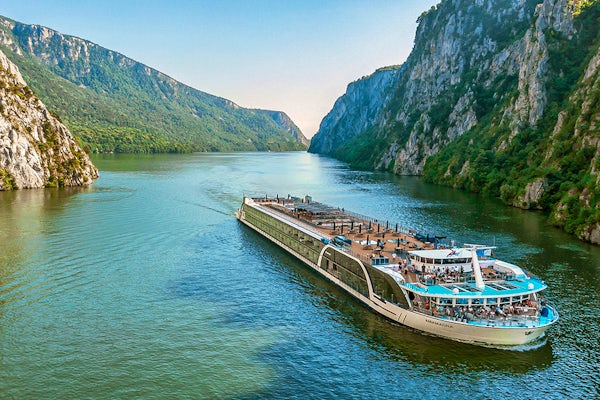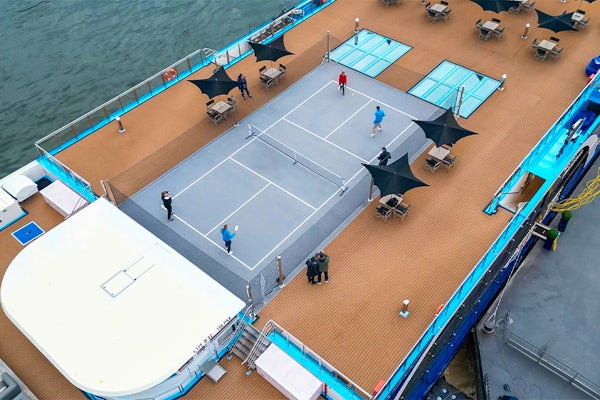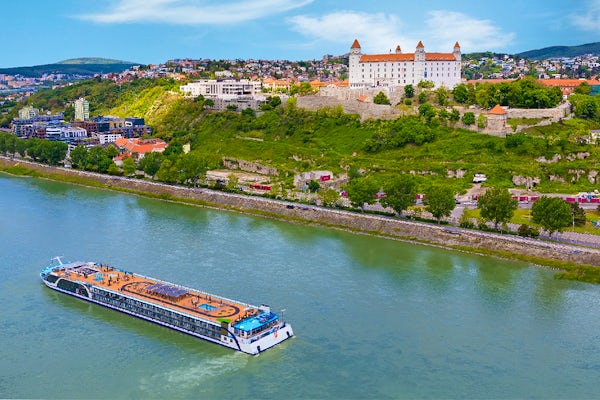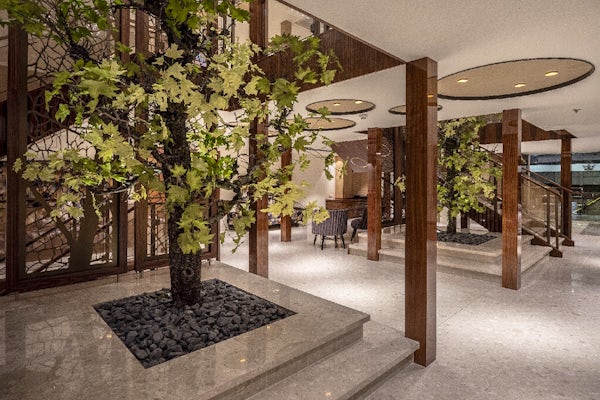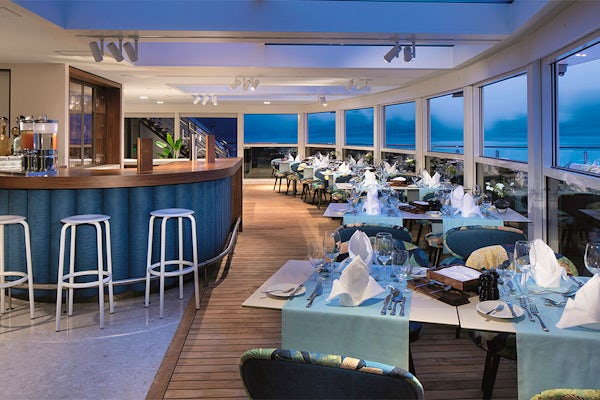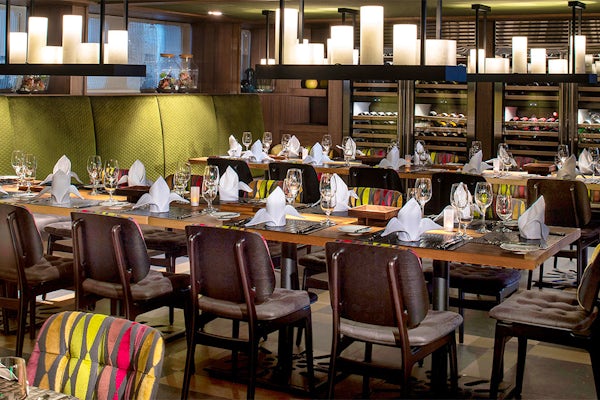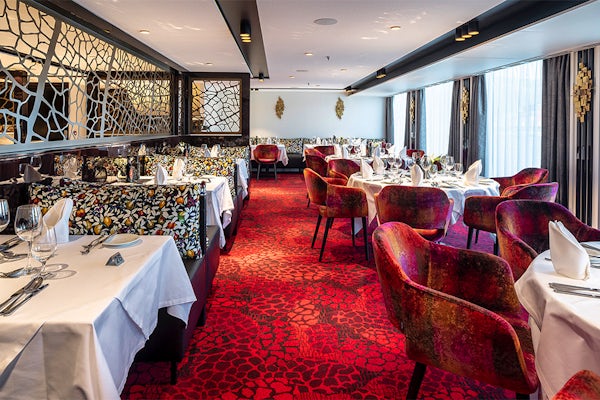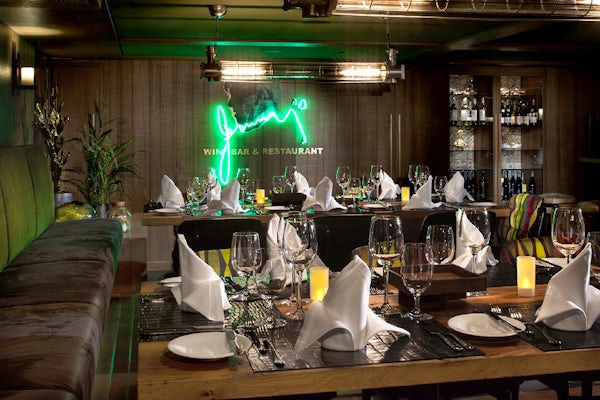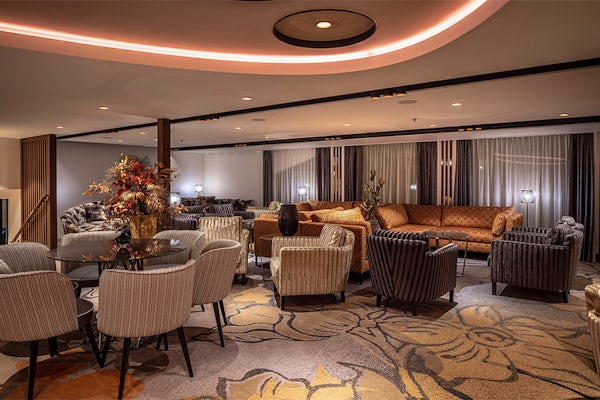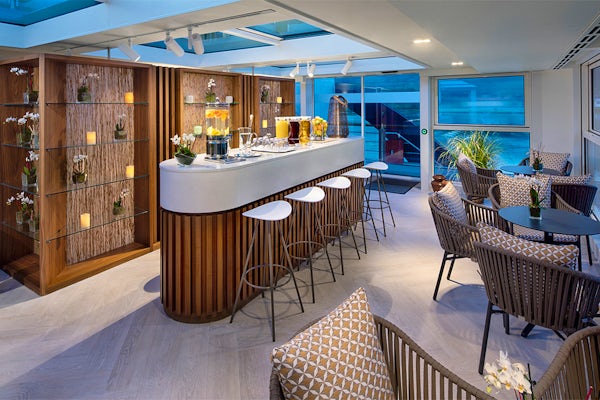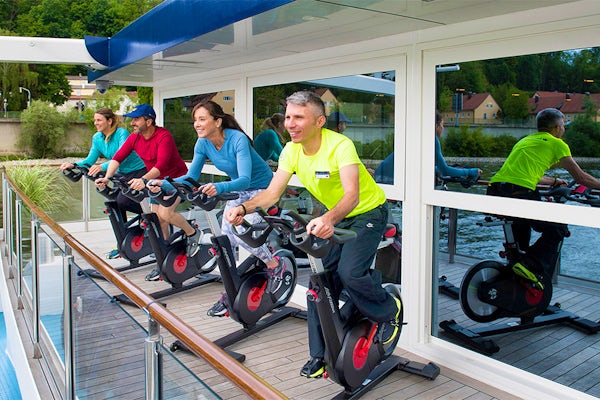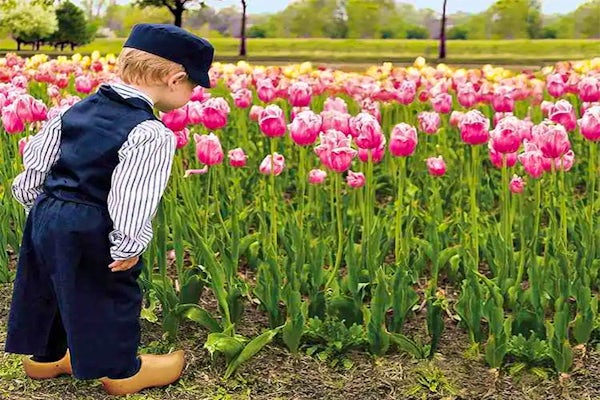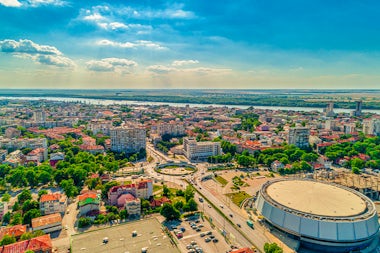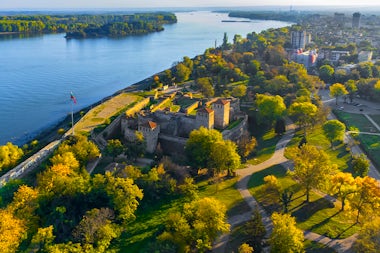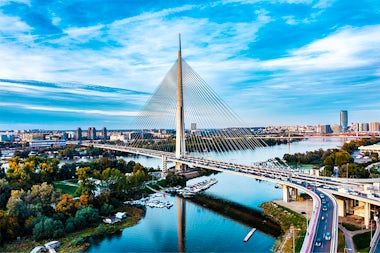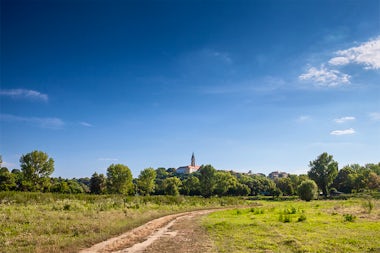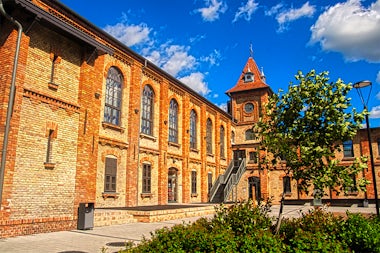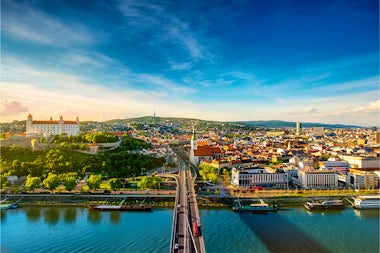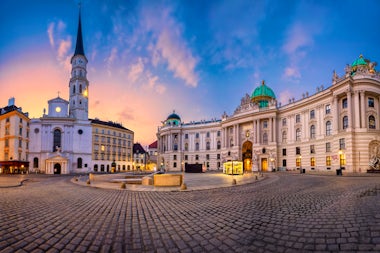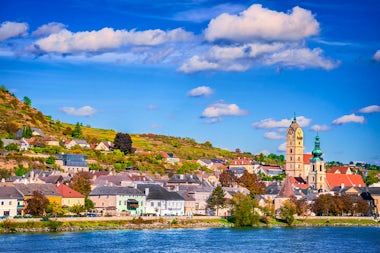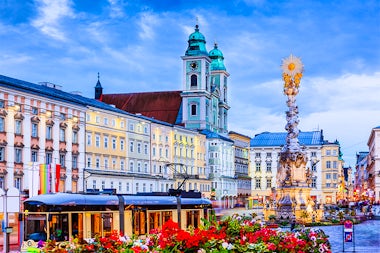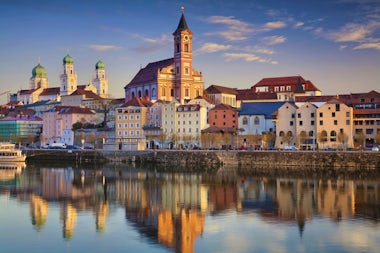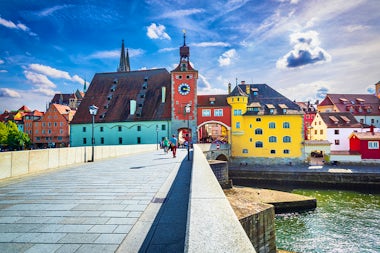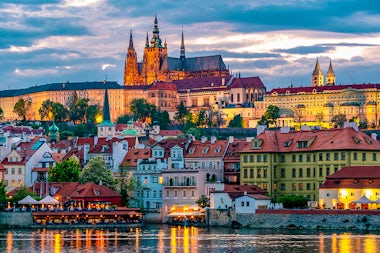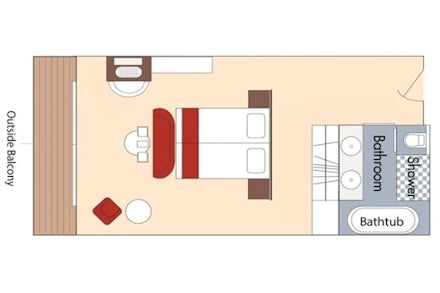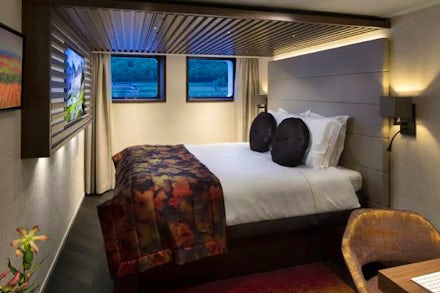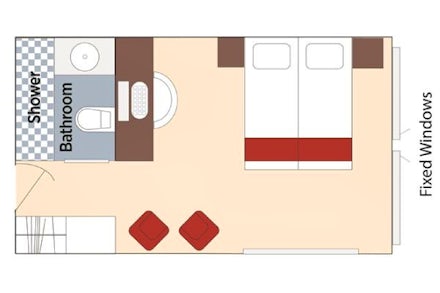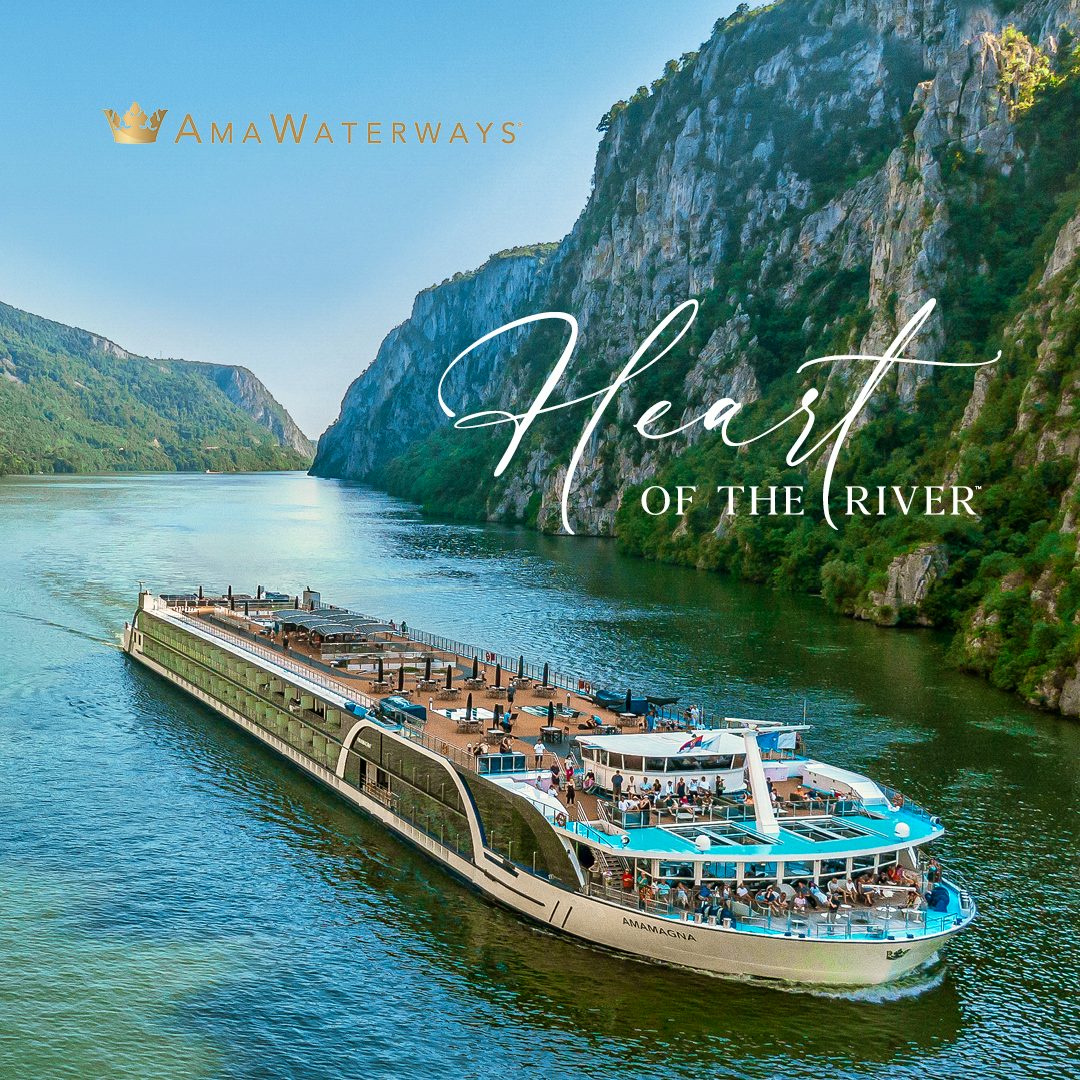| 1 |
Sunday, June 22, 2025 |
Giurgiu, Romania |
Embark |
|

Giurgiu, 65 km south of Bucharest, is the capital city of Giurgiu County, Romania. It is situated amid mud-flats and marshes on the left bank of the Danube facing the Bulgarian city of Rousse on the opposite bank. Three small islands face the city, and a larger one shelters its port, Smarda. Read more about Giurgiu, Romania
|
| 2 |
Monday, June 23, 2025 |
At Sea |
|
|
| 3 |
Tuesday, June 24, 2025 |
At Sea |
|
|
| 4 |
Wednesday, June 25, 2025 |
At Sea |
|
|
| 5 |
Thursday, June 26, 2025 |
At Sea |
|
|
| 6 |
Friday, June 27, 2025 |
Rousse, Bulgaria |
|
|

Rousse - aka Ruse, Russe - in NE Bulgaria lies on the right bank of the Danube River, opposite the Romanian city of Giurgiu. An important cultural, commercial and industrial centre, it is often called Little Vienna as it has become the most important Bulgarian river port. With more than 290 monuments and its preserved buildings from the end of 19th and the beginning of 20th centuries, it is also ‘easy visiting’ as most of the sights, such as the old city that constitutes the square around the city’s Historical Museum, are located in the centre of the city. Read more about Rousse, Bulgaria
|
| 7 |
Saturday, June 28, 2025 |
Vidin, Bulgaria |
|
|

Vidin is a port town on the southern bank of the Danube River in NW Bulgaria. Renowned for its availability of mineral water, it is also one of the oldest towns along the Bulgarian Danube Bank, and is a starting point for excursions along the Danube. An agricultural and trade centre, Vidin has a fertile hinterland renowned for its wines. Read more about Vidin, Bulgaria
|
| 8 |
Sunday, June 29, 2025 |
Iron Gate, Romania |
|
|

The Iron Gate is principally applied to the last gorge of the Djerdap gorge system on the River Danube, and forming part of the boundary between Serbia and Romania. In the broad sense the name Iron Gate encompasses the whole 145 km long gorge system. The flora and fauna, as well as the geomorphological, archaeological and cultural artefacts of the Iron Gate have been under protection from both nations since the river’s dam construction. Read more about Iron Gate, Romania
|
| 9 |
Monday, June 30, 2025 |
Belgrade, Serbia |
|
|

Belgrade is the capital and largest city of Serbia, lying on two international waterways at the junction of the Sava and Danube rivers. Here is found the statue of Pobednik (Winner), one of the symbols of Belgrade. It is also the second largest city on the Danube River and is one of the oldest cities in Europe. Read more about Belgrade, Serbia
|
| 10 |
Tuesday, July 1, 2025 |
Ilok, Croatia |
|
|

Ilok, a charming town in eastern Croatia, is situated on a hill overlooking the Danube River. Known for its rich history and viticulture, Ilok boasts the impressive Ilok Castle, which houses a museum and offers stunning views of the surrounding vineyards and river. The town is famous for its excellent wines, particularly Traminac, produced in its centuries-old wine cellars. Read more about Ilok, Croatia
|
| 11 |
Wednesday, July 2, 2025 |
Mohacs, Hungary |
|
|

Mohacs is a Hungarian town in the SE part of Baranya County, on both sides of the river Danube. It is possibly best known for its Buso Carnival originating from Turkish times, which lasts for six days, when locals bury the winter and party before the start of Lent. Also of great interest are the Buso masks that, according to legend, helped locals scare away the Turks in the 16th century. Read more about Mohacs, Hungary
|
| 12 |
Thursday, July 3, 2025 |
Budapest, Hungary |
|
|

Budapest is the capital and largest city of Hungary, situated on both banks of the river Danube, with its 346 river cruise ships (2019). Originally with the cities of Buda on the west bank and Pest on the east bank, it became a single city with their unification in 1873. The city’s rich and colourful history, its extensive World Heritage Site including the Danube River banks, the Buda Castle Quarter, Andrássy Avenue, and the Millennium Underground Railway, have resulted in its becoming an important tourist centre in Central Europe. Read more about Budapest, Hungary
|
| 13 |
Friday, July 4, 2025 |
Budapest, Hungary |
|
|

Budapest is the capital and largest city of Hungary, situated on both banks of the river Danube, with its 346 river cruise ships (2019). Originally with the cities of Buda on the west bank and Pest on the east bank, it became a single city with their unification in 1873. The city’s rich and colourful history, its extensive World Heritage Site including the Danube River banks, the Buda Castle Quarter, Andrássy Avenue, and the Millennium Underground Railway, have resulted in its becoming an important tourist centre in Central Europe. Read more about Budapest, Hungary
|
| 14 |
Saturday, July 5, 2025 |
Bratislava, Slovakia |
|
|

Bratislava, the capital of Slovakia, is situated on both banks of the Danube River between Austria and Hungary, and is the only national capital that borders two independent countries. Bratislava and Vienna are also two of Europe's closest national capitals, less than 60 km apart. The cityscape of Bratislava is noted for its medieval towers and grandiose 20th century buildings, but has undergone profound changes in a construction boom at the start of the 21st century. Read more about Bratislava, Slovakia
|
| 15 |
Sunday, July 6, 2025 |
Vienna, Austria |
|
|

Vienna, Austria's capital city, has a population of around two million and is located to the east of the Alps in the Vienna Basin. Architectural styles range from classic to modern, and include some of the world’s best known examples of Art Nouveau. Fascinating features are the few high-rise buildings, and numerous parks and gardens, with many statues of famous people such as Mozart and Strauss. Read more about Vienna, Austria
|
| 16 |
Monday, July 7, 2025 |
Krems, Austria |
|
|

Krems is located at the confluence of the Krems and Danube rivers at the eastern end of the Wachau valley in the Walsviertel, about 70km west of Vienna. Its history dates as far back as 995 and today it is the fifth largest city of Lower Austria. The old town of Krems is definitely worth seeing as it was appointed UNESCO World Heritage in 2000. Read more about Krems, Austria
|
| 16 |
Monday, July 7, 2025 |
Spitz, Austria |
|
|

The market town of Spitz (population 1600) lies on the left bank of the Danube River in Lower Austria, in the midst of the World Heritage area of Wachau. The Wachau is a valley with a picturesque landscape, and is a prominent tourist destination. Spitz lies along 1.5 km of the river bank, and is surrounded on all sides by hills to 600 m. Read more about Spitz, Austria
|
| 17 |
Tuesday, July 8, 2025 |
Linz, Austria |
|
|

Linz is the third-largest city in Austria and the capital of the federal state of Upper Austria. Bridging both banks of the Danube River, it lies 30 km south of the Czech border. Stroll through the marvelous old quarter of the town, and be astonished by this progressive development of the city. Read more about Linz, Austria
|
| 18 |
Wednesday, July 9, 2025 |
Passau, Germany |
|
|

Passau is a town in Lower Bavaria, Germany, at the junction of three Rivers: the Danube, the Inn from the South, and the Ilz coming out of the Bavarian Forest to the North. During the Renaissance and early modern period it became one of the most prolific centres of sword and bladed weapon manufacture in Germany. Today it is notable for its gothic and baroque architecture. Read more about Passau, Germany
|
| 18 |
Wednesday, July 9, 2025 |
Vilshofen, Germany |
|
|

The charming 1200-year-old town of Vilshofen is located in the southern part of the Bavarian Forest and on the banks of the Danube. At this age, the town has seen its fair share of flood, plague, and war. But despite the cracks caused by these unforeseen and unfortunate circumstances, the town is even more attractive now - having survived it all. Read more about Vilshofen, Germany
|
| 19 |
Thursday, July 10, 2025 |
Vilshofen, Germany |
|
|

The charming 1200-year-old town of Vilshofen is located in the southern part of the Bavarian Forest and on the banks of the Danube. At this age, the town has seen its fair share of flood, plague, and war. But despite the cracks caused by these unforeseen and unfortunate circumstances, the town is even more attractive now - having survived it all. Read more about Vilshofen, Germany
|
| 19 |
Thursday, July 10, 2025 |
Regensburg, Germany |
|
|

Regensburg is a city in Bavaria, Germany, situated at the junction of the Danube and Regen rivers. The large medieval centre of the city is a UNESCO World Heritage Site. Home to two thousand years of living history with some of Europe's most important architectural and cultural monuments, plus fascinating museums and art collections, make this an attractive place to spend some time. Read more about Regensburg, Germany
|
| 19 |
Thursday, July 10, 2025 |
Prague, Czechia |
|
|

Prague (aka Praha) is the capital and largest city of the Czech Republic, located on the River Vltava in central Bohemia. Not surprisingly, nicknames for the city include: ‘The Mother of Cities’, ‘The City of a Hundred Spires’, and ‘The Golden City’, all of which explains its listing in the UNESCO list of World Heritage Sites. Prague suffered considerably less damage during World War II than some other major cities in the region, allowing most of its historic architecture to stay true to form, and subsequently contains one of the world's most pristine and varied collections of architecture, from Art Nouveau to ultra-modern. Read more about Prague, Czechia
|
| 20 |
Friday, July 11, 2025 |
Prague, Czechia |
|
|

Prague (aka Praha) is the capital and largest city of the Czech Republic, located on the River Vltava in central Bohemia. Not surprisingly, nicknames for the city include: ‘The Mother of Cities’, ‘The City of a Hundred Spires’, and ‘The Golden City’, all of which explains its listing in the UNESCO list of World Heritage Sites. Prague suffered considerably less damage during World War II than some other major cities in the region, allowing most of its historic architecture to stay true to form, and subsequently contains one of the world's most pristine and varied collections of architecture, from Art Nouveau to ultra-modern. Read more about Prague, Czechia
|
| 21 |
Saturday, July 12, 2025 |
Prague, Czechia |
|
|

Prague (aka Praha) is the capital and largest city of the Czech Republic, located on the River Vltava in central Bohemia. Not surprisingly, nicknames for the city include: ‘The Mother of Cities’, ‘The City of a Hundred Spires’, and ‘The Golden City’, all of which explains its listing in the UNESCO list of World Heritage Sites. Prague suffered considerably less damage during World War II than some other major cities in the region, allowing most of its historic architecture to stay true to form, and subsequently contains one of the world's most pristine and varied collections of architecture, from Art Nouveau to ultra-modern. Read more about Prague, Czechia
|
| 22 |
Sunday, July 13, 2025 |
Prague, Czechia |
|
Disembark |

Prague (aka Praha) is the capital and largest city of the Czech Republic, located on the River Vltava in central Bohemia. Not surprisingly, nicknames for the city include: ‘The Mother of Cities’, ‘The City of a Hundred Spires’, and ‘The Golden City’, all of which explains its listing in the UNESCO list of World Heritage Sites. Prague suffered considerably less damage during World War II than some other major cities in the region, allowing most of its historic architecture to stay true to form, and subsequently contains one of the world's most pristine and varied collections of architecture, from Art Nouveau to ultra-modern. Read more about Prague, Czechia
|
